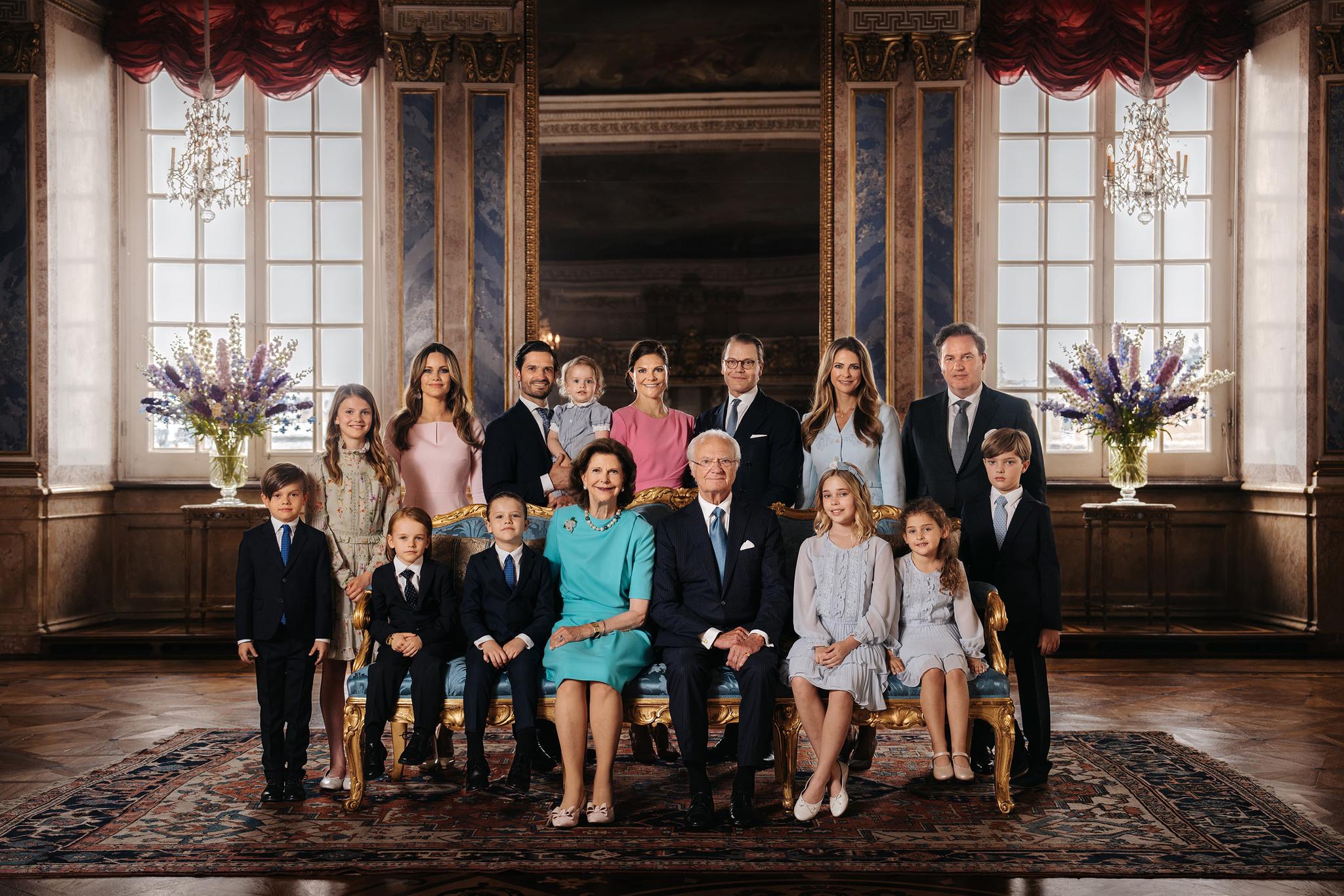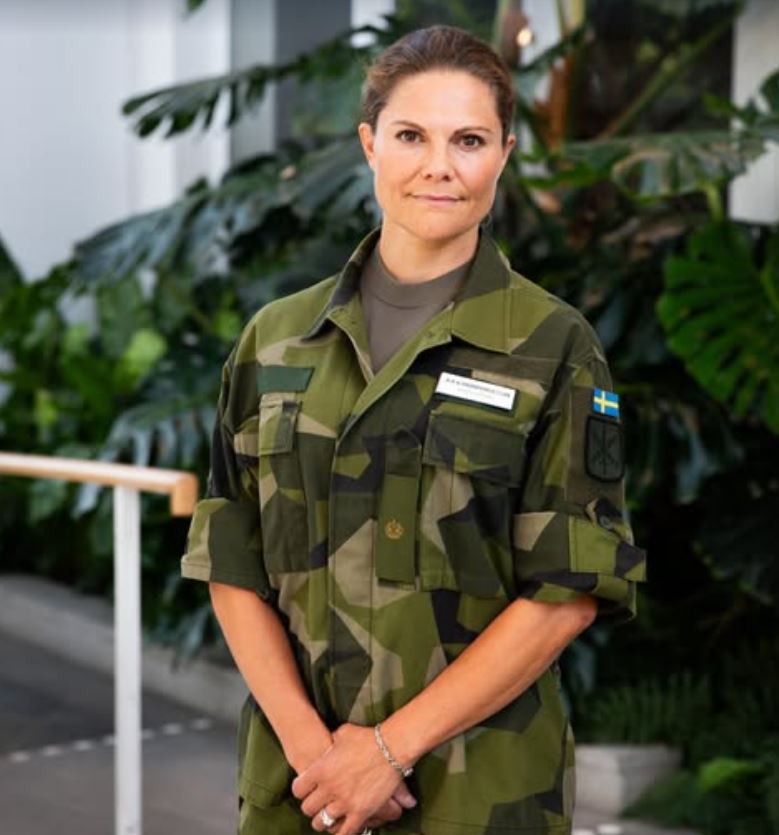The Swedish royal family
Beyond constitutional and ceremonial duties, Sweden’s royal family is devoted to various good causes.
'For Sweden – with the times.' This is the motto of King Carl XVI Gustaf, Sweden's Head of State and foremost representative of the Swedish royal family.
Armed with the ambition to serve his country in a manner always suitable to the present, the King ascended to the Swedish throne on 15 September 1973. According to the 1974 constitution, the monarch has no political affinity or formal powers, with duties mainly of a ceremonial and representative nature.
Duties and commitments
Every year in September, King Carl XVI Gustaf opens the Parliamentary Session at the request of the Speaker of the Riksdag. This marks the beginning of a parliamentary working year.
Furthermore, the King holds regular Councils of State, an opportunity for ministers to inform the Head of State and the heir to the throne – Crown Princess Victoria – about government policies. And when a new government takes up its duties, the King chairs the Change of Government Council, at the Royal Palace.
State visits
The King represents Sweden during both incoming and outgoing state visits, building personal relationships between the countries. The visits are planned in consultation with the Government. King Carl XVI Gustaf usually makes two or three state visits abroad each year.
When he is prevented from performing his duties as Head of State, one of King Carl XVI Gustaf’s three children assume the duties of a temporary regent – Crown Princess Victoria, Prince Carl Philip or Princess Madeleine, in that order.
King Carl XVI Gustaf is known for his commitment to the environment. He also promotes Sweden’s cultural heritage, for example by granting the public access to the royal palaces with their collections and parks.
Longest reigning monarch
In 2023, King Carl XVI Gustaf celebrated 50 years on the throne, as the seventh monarch of the House of Bernadotte and the longest reigning monarch in Swedish history.
Background
King Carl XVI Gustaf was born on 30 April 1946 as the fifth child and only son of Crown Prince Gustaf Adolf and Princess Sibylla. His father died in an air crash in Denmark the following year.
Because of his father’s early death, he became King of Sweden at a young age. He was 27 when he succeeded his grandfather Gustaf VI Adolf on the throne, when the latter passed away on 15 September 1973.
Queen Silvia
In 1972, the then Crown Prince Carl Gustaf met his German–Brazilian future wife, Silvia Sommerlath, who was born in 1943 in Germany. They met in Munich during the Olympic Games, where Silvia was chief hostess. A trained interpreter, Silvia is the first Swedish queen to have had a professional career.
King Carl Gustaf and Queen Silvia married in 1976. At the time royal weddings that included non-nobility were highly unusual, and Queen Silvia has since modernised the position of queen so that it is in step with the times. She has taken initiatives to pursue several social issues close to her heart, in particular children’s rights.
King Carl XVI Gustaf and Queen Silvia reside in Drottningholm Palace, just west of Stockholm.
Crown Princess Victoria – future queen
When she succeeds her father, Crown Princess Victoria will become Sweden’s fourth female monarch in the history of the Kingdom of Sweden, and the first since 1720.
Victoria was born on 14 July 1977. In 1980, the Succession Act was retroactively made gender-neutral, which made Victoria’s title change from Princess to Crown Princess.
Crown Princess Victoria regularly attends information councils with government ministers, and also steps in as a temporary regent when needed.
Her agenda also includes attending official dinners, openings and visits from foreign dignitaries. She is in great demand as an ambassador for Swedish ventures in culture, art and design, which are also personal interests.
Crown Princess Victoria promotes the UN’s Sustainable Development Goals (SDG) for 2030 and works actively with issues concerning water and health (SDG goals 6 and 14).
In 2024, Crown Princess Victoria embarked on special officer training in the Swedish Armed Forces. This training is part of the Crown Princess's efforts to broaden her knowledge for her future as head of state.
The Crown Princess family
In 2010, Crown Princess Victoria married Daniel Westling, who became Prince Daniel, Duke of Västergötland. Their first child, Princess Estelle, was born in 2012 and is second in line to the Swedish throne. Third in line is Princess Estelle’s brother, Prince Oscar, born in 2016.
The family lives in Haga Palace outside Stockholm, the birthplace and early home of King Carl XVI Gustaf.
The Swedish Crown Princess Couple’s Foundation combats social isolation and promotes good health among children and young people in Sweden. It was established by Crown Princess Victoria and Prince Daniel to mark the occasion of their marriage.
Crown Princess Victoria and Prince Daniel have also initiated Generation Pep, a non-profit organisation working to spread knowledge and engage people and organisations in making it easier for children and young people to live healthy lives with sufficient exercise and correct nutrition.
Three famous Swedish monarchs
Gustav II Adolf (1611–1632)
Intervened in the Thirty Years’ War, making Sweden a leading military power. Gustav II Adolf was killed at the Battle of Lützen.
Kristina (1632–1654)
The first female monarch after Sweden became a hereditary monarchy. Abdicated in 1654, converting to Catholicism and settling in Rome.
Gustav III (1771–1792)
Called the Theatre King, Gustav III founded Stockholm's first opera, the Swedish Academy and the Royal Academy of Music. Assasinated at a masquerade ball.
Prince Carl Philip
Prince Carl Philip, Duke of Värmland, is Crown Princess Victoria's brother and the second oldest of the three siblings.
In 2015, Prince Carl Philip married Sofia Hellqvist, now Princess Sofia. In connection with the wedding, the Prince Couple’s Foundation was started.
With the vision that all children and young people should have the possibility to be themselves, the foundation has its work focus on creating a safer internet environment, as well as improving the respect and understanding for people with dyslexia.
Prince Carl Philip and Princess Sofia have three sons and one daughter: Prince Alexander (born 2016), Prince Gabriel (2017), Prince Julian (2021), and Princess Ines (2025).
Princess Madeleine
Princess Madeleine, Duchess of Häsingland and Gästrikland, is Crown Princess Victoria's and Prince Carl Philip's younger sibling.
Since 2006, she has been involved in the World Childhood Foundation, an organisation started by Queen Silvia that works to protect children from violence and sexual abuse.
For several years, the Princess family lived in the UK and the US, but Princess Madeleine continued to be involved in the work of the World Childhood Foundation. She has been the organisation's Vice Honorary Chair since December 2021. In the summer of 2024, Princess Madeleine and her family moved back to Sweden.
On 8 June 2013, Princess Madeleine married British–American businessman Christopher O’Neill. He has not added Bernadotte to his name, preferring instead to retain his UK and US citizenships. He therefore has no royal titles and is not an official member of the Royal Family.
Princess Madeleine and Christopher O-Neill have three children: Princess Leonore (born 2014), Prince Nicolas (2015), and Princess Adrienne (2018).
French origins
Swedish monarchs date back around a thousand years and have belonged to eleven dynasties. The current Swedish royal family is of the House of Bernadotte, the dynasty that has ruled the longest.
In 1810, King Karl XIII was left without a successor, following the death of his adopted son Prince Karl August.
King Karl XIII – who himself had been appointed the year before following his nephew King Gustav IV Adolf’s deposal – opted to adopt Frenchman Jean Baptiste Bernadotte (1763–1844), a former general under Napoleon Bonaparte. Thus, his heir to the throne was established.
Sweden’s power in Europe was in decline at the time, with the country having lost Finland to Russia in 1809. With his experience as military commander, Bernadotte was deemed a valid successor. Also, as a marshal under Napoleon, Bernadotte had actively advised against an invasion of Sweden, which made him a popular choice.
Jean Baptiste Bernadotte became Karl XIV Johan, first as prince and later as king. He was crowned King of Sweden and Norway in 1818, following King Karl XIII’s death.

